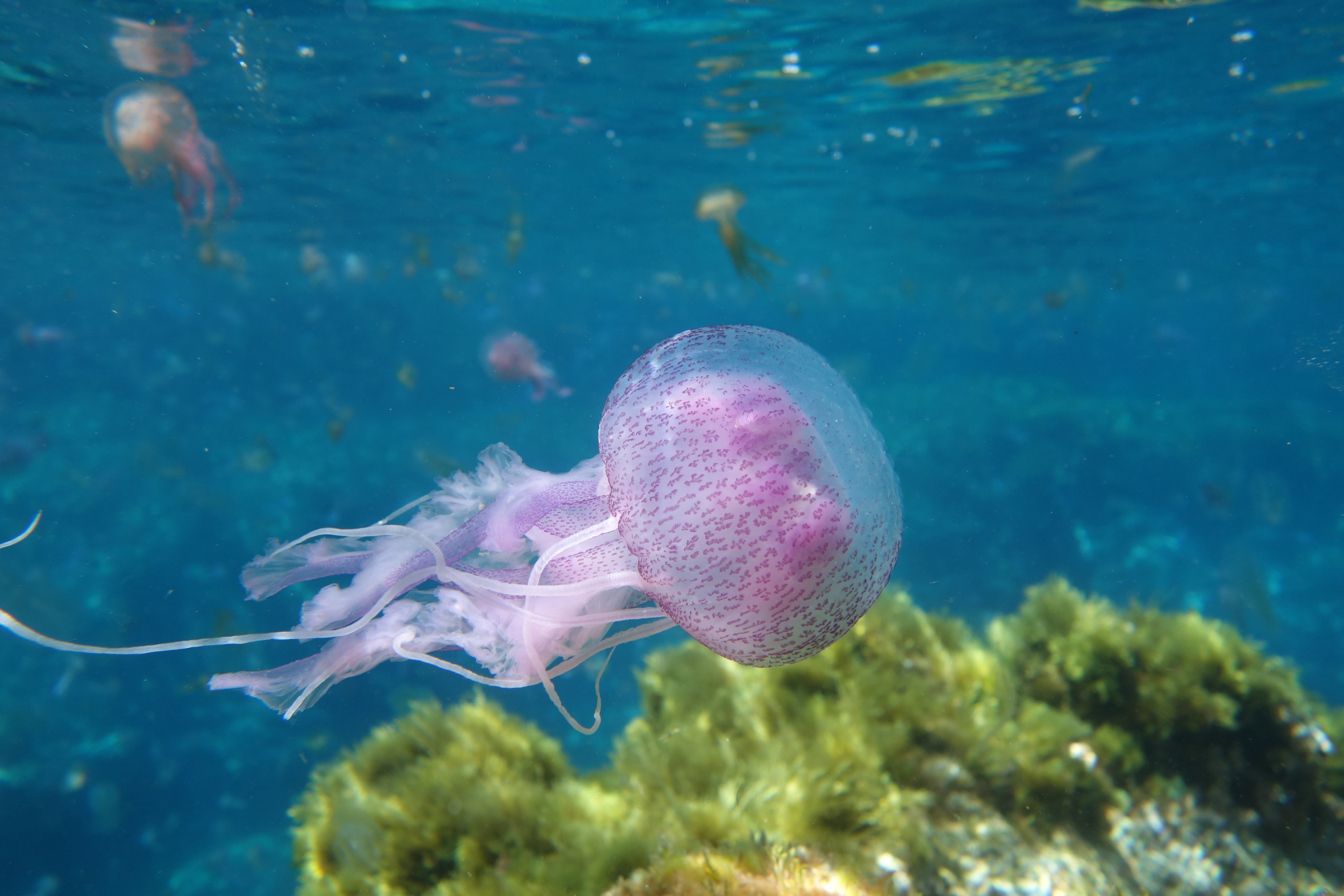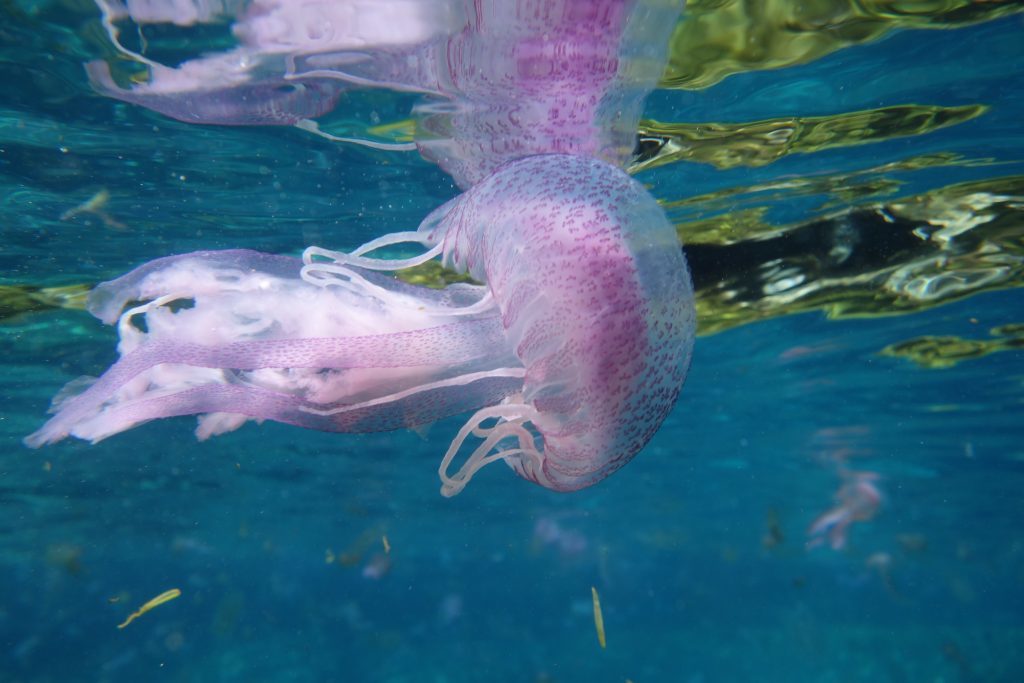I had never swum in jellyfish soup before – and it is not something to be repeated.
With snorkel gear donned, I gently slipped into the clear blue Mediterranean waters of a remote rocky cove in Mallorca only to realise I was in a bit of trouble.
There were jellyfish everywhere, a swarm of mauve stingers thickening the water as far as the eye could see. Maybe I could avoid them if I took extra care. So I started to take some photographs with my underwater camera, gingerly manoeuvring with gentle flicks of my flippers.
But the inevitable happened. I was stung in the forearm and then again on my legs, the sensation being similar to a bad nettle sting. It was time to get out.
I hauled myself onto a rock and watched the multitude of jellyfish through the sun-sparkled water below my feet. Despite their nasty side, these mauve stinger jellyfish were rather attractive with their umbrellas and tentacles subtly flecked with purple.
Then, I saw a most strange organism floating on the surface; blue in colour and circular in shape, and about the circumference of a £2 coin. On the top was a translucent arch, which seemed to be acting like a mini sail. In all honesty the creature looked like a rolled up condom floating in the water, but a more genteel description would be to compare it to a small blue sailing boat.
Hoping the animal wasn’t poisonous, I picked it up by its little sail and turned it over where there were numerous tiny blue tentacles. This was a creature called a by-the-wind sailor or purple sail, and belongs to a group of animals known as hydrozoans. Each specimen is a colony of specialised individual polyps that all work together as one.
When the wind blows, it fills their sails and carries them to the shore, where they can sometimes accumulate. I had never seen one before and I was most struck by its weird form. How did Mother Nature come up with that one?
Mallorca is such a superb place for wildlife. My wife, Lynda, and I were so taken with this Spanish island on a brief break last autumn that we had now returned for a walking holiday (with a daily snorkel thrown in). Each day we hiked the trails of the stunning Serra de Tramuntana mountains where we watched black vultures soar high in the sky and listened to the tinkling calls of serins.
The wildflowers were wonderful too, including wild gladioli and the delicate white blooms of sage-leafed rock rose. One day we visited the Parc Natural de S’Albufera wetland where we heard the astonishing melodies of nightingales in the thickets.
Nine days after my jellyfish encounter, when it was time to head back home to Scotland, my forearm and legs were still red and tingling from their stings. I had, it would seem, collected a holiday memento with a difference.
Info
Mauve stinger jellyfish also occur in Scottish waters where they have been known to swarm too. They are bioluminescent and have the ability to glow in the dark. They feed on zooplankton.











